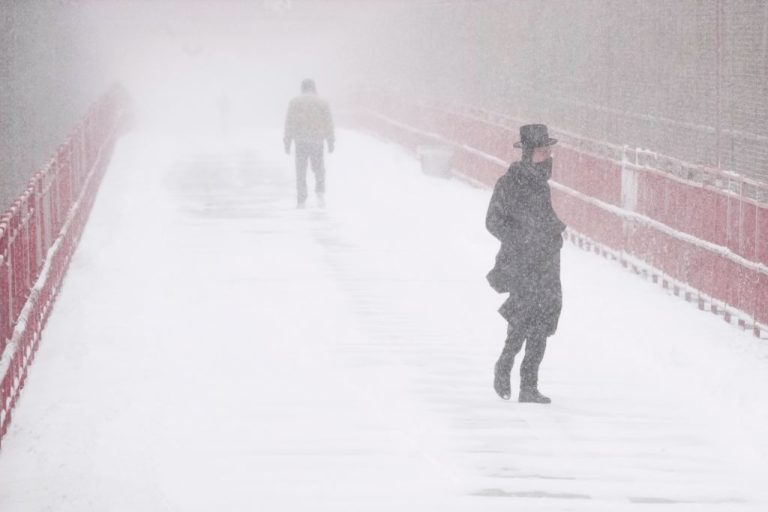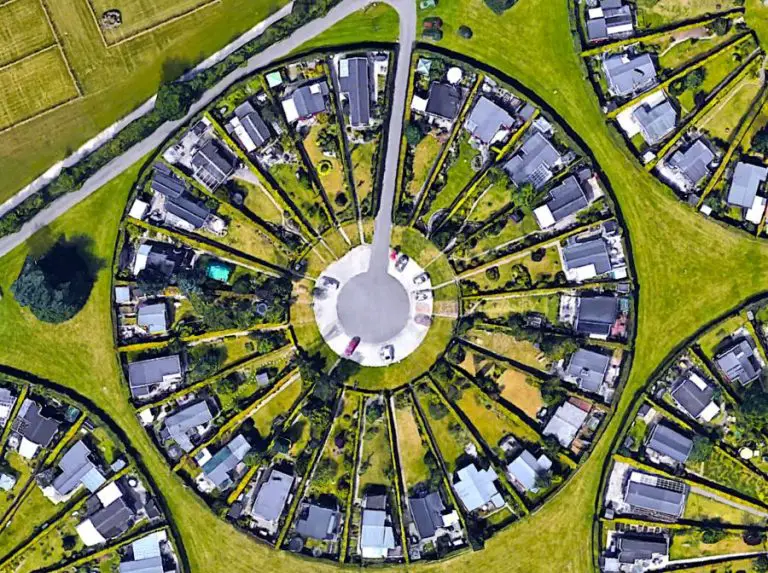What Is A Crystal Forest?
What Are Crystal Forests?
Crystal forests are visually stunning natural wonders that look like something out of a fantasy world. They are areas where crystals of all sizes have grown in incredibly dense clusters and formations, creating a forest made of shimmering minerals rather than trees.
Crystal forests form through a natural geological process called hydrothermal circulation. Groundwater becomes superheated by magma chambers beneath the earth’s surface, dissolving minerals like quartz and gypsum in the bedrock. The mineral-rich water then rises up through cracks and fissures, eventually cooling and depositing the minerals, causing them to crystallize on the walls and floors of caves and cavities.
Over hundreds to thousands of years, the continuous deposition and accumulation of mineral crystals can create a veritable forest of densely packed crystal formations. The structures can take many forms, from tiny delicate crystals and crystal-coated walls, to huge crystal clusters, columns, and even entire caverns filled with gigantic crystals.
The result is a breathtaking natural spectacle with crystals of all shapes, sizes, and colors clustered together in a way that resembles a glittering underground forest. The interplay of crystal formations creates a landscape of natural architecture that is visually stunning and seems almost otherworldly.
Where Crystal Forests Are Found
Crystal forests are rare geological formations that are found only in certain locations around the world that meet the specific conditions needed for them to form. The most famous and largest concentration of crystal forests is located in Petrified Forest National Park in northeastern Arizona, USA.
In order for crystal forests to develop, there needs to be significant volcanic activity in the area that releases large amounts of silica-rich ash into the environment. When this ash is buried and compacted over millions of years, the silica crystallizes into quartz crystals. The crystals grow vertically into the open pockets left by decomposing logs and plant matter, resulting in the enchanted pillars that characterize crystal forests.
Other notable locations where crystal forests can be found include the Cerro Las Minas reserve in Mexico, the Kalahari manganese fields of South Africa, the geothermal areas of Iceland, and in parts of Australia and Brazil. However, the concentration and diversity of crystals in Petrified Forest National Park makes it the premier destination to see these rare and visually stunning geological structures.
How Crystal Forests Form

Crystal forests form through geological processes that allow mineral-rich solutions to slowly deposit crystals over time. The key conditions needed are:
Water – A saturated mineral solution with high concentrations of dissolved minerals like calcium, manganese, and copper is needed. This typically comes from groundwater sources.
A Cavity or Space – An open cavity like a geode or cave allows room for crystals to form and grow unimpeded. The crystals start forming on the cavity walls and floor.
Slow Evaporation – As the mineral-rich water slowly evaporates, the dissolved minerals become oversaturated and crystallize out of the solution. Evaporation happens continuously over long periods of time.
Stable Temperature – A relatively stable, cool temperature allows the crystals to form slowly. Rapid temperature changes would cause unattractive crystal formations.
Still Conditions – Minimal disturbance allows the crystals to form undisturbed as the mineral solution evaporates. Air currents or vibration disrupts crystal structure.
Crystal forests can take thousands to millions of years to form through this gradual geological process. Famous crystal caves like the Cueva de los Cristales in Mexico exemplify these unique natural wonders.
Source: The Crystal Forest
Types of Crystals in Crystal Forests
Crystal forests contain a wide variety of crystal types, many of which are sought after by rockhounds and collectors. Some of the most common crystal types found in these environments include:
Quartz – Clear or milky quartz is the most abundant mineral in crystal forests. Varieties like smoky quartz, rose quartz, and citrine also occur. Quartz forms in hexagonal prismatic crystals and can grow to immense sizes in crystal forests.
Amethyst – This popular violet variety of quartz forms when trace amounts of iron are present. Amethyst crystals are found scattered throughout many crystal forests.
Fluorite – Fluorite grows in cubic crystals that fluoresce under ultraviolet light. Purple, blue, green, and clear fluorite is common in crystal forests.
Calcite – Calcite is a calcium carbonate mineral that forms rhombohedral, hexagonal, and scalenohedral crystals. It occurs in many colors like orange, pink, yellow, and clear.
Selenite – The gypsum variety selenite forms transparent, pearlescent tabular crystals in crystal forests. Large selenite crystals are quite fragile.
Other minerals like mica, celestite, apatite, and various sulfides can also be found growing among the crystal giants in these unique natural wonderlands. The diversity of crystals contributes to the magical allure of crystal forests for rock collectors and nature lovers alike.
Sources:
https://www.quora.com/How-do-I-find-crystals-in-the-forest
Unique Properties of Crystal Forests
Crystal forests exhibit many unique optical, energetic, and spiritual properties that set them apart from other geological formations.
Optically, the crystalline structures act like prisms, refracting light into dazzling rainbow displays. As light passes through the translucent crystals, it separates into its constituent spectral colors. This creates a vivid display of reds, oranges, yellows, greens, blues, indigos, and violets dancing throughout the forest. The effect is enhanced when the crystals are wet from rain or mist, amplifying the prismatic refractions (Properties and Benefits of Crystal Tree).
Energetically, crystal forests are believed to emit subtle vibrational energies. Many describe them as places of peace, harmony, and spiritual renewal. The piezoelectric effect of the vibrating crystals purportedly generates beneficial energy fields. Some believe surrounding yourself with crystals from a forest can heal, balance, and rejuvenate the mind, body, and spirit (Properties and Benefits of Crystal Tree).
Spiritually, crystal forests are revered by many as sacred, mystical sites. The combination of dazzling optical displays and subtle energetic vibrations creates an otherworldly atmosphere. Throughout history and across cultures, they have been venerated as power places, domains of gods and earth spirits, or connections to a higher state of consciousness. Many pilgrims are drawn to these transcendent havens of light and energy.
Crystal Forests Around the World
Crystal forests can be found in stunning locations across the globe. Here are some of the most famous and remarkable crystal forest sites worldwide:
The Sodalite Forests of Bancroft, Ontario in Canada are famous for their striking sodalite crystals up to a meter long. The blue hues of the sodalite crystals stand out brilliantly against the rock.
The Clearwater Diamond Crystal Forests in Arkansas, USA contain hundreds of thousands of perfectly formed quartz crystals. Some of the ancient crystals measure over 1 meter long and weigh over 100 kilograms.
Naica Mine in Mexico is home to the Cave of Crystals, containing selenite crystals over 10 meters long and weighing 55 tons. The cave’s extreme heat and humidity conditions allowed the enormous crystals to form over centuries.
Reed Flute Cave in Guilin, China showcases shimmering calcite crystals that resemble glimmering icicles. The cave is lit with multicolored lights that create dazzling displays as they reflect off the crystals.
The Jenolan Caves and Wombeyan Caves in Australia contain magnificent calcite and limestone crystal formations created by underground rivers cutting through limestone. The caves are renowned for their outstanding natural beauty.
The Frozen Crystal Forest on Mount Erebus in Antarctica hosts ice crystals formed by steam freezing within lava tubes. The chambers are lined with hexagonal ice crystals measuring over 1 meter long.
The Crystal Forest at Mahabalipuram in India displays giant rock crystals formed naturally from cooling magma millions of years ago. The sparkling crystals protrude from the smooth rock surfaces.
Threats and Conservation
Crystal forests face a number of environmental threats. Climate change is one of the biggest dangers, as rising temperatures can alter the delicate balance needed for crystal formation. Drought conditions reduce water availability, while increased storms and flooding can erode or damage crystal structures.
Pollution also poses risks. Acid rain can slowly dissolve crystal surfaces, while contaminants in groundwater can inhibit crystal growth. Human activities like mining and deforestation disturb landscapes and their natural hydrology. Even tourism, if not properly managed, can degrade trails and disturb wildlife.
Various efforts aim to conserve remaining crystal forests. Protected areas have been established, like China’s Reed Flute Cave park. The Cuevas de los Cristales in Mexico strictly limits visitors. Other initiatives focus on restoring damaged ecosystems or managing tourism. However, more work is needed to fully understand these rare habitats.
Sustainable policies that reduce emissions, pollution, and habitat loss are key to preserving crystal forests for future generations. As climate change accelerates, the outlook remains uncertain. But with proactive conservation, these dazzling, fragile realms may continue crystallizing for centuries to come.
Sources:
https://www.iastoppers.com/articles/31st-march-2023-current-affairs-analysis
Visiting Crystal Forests
When visiting crystal forests, it’s important to be a responsible tourist to help preserve these unique natural wonders for future generations. Some best practices for responsible tourism in crystal forests include:
Plan Ahead – Research crystal forest locations and contact local tourism boards to learn about rules, regulations, and tips for your visit. Consider visiting during off-peak seasons when there are fewer tourists.
Stay on Designated Trails – Follow marked trails and obey signs to avoid damaging fragile crystal formations. Sticking to trails also helps prevent injuries from uneven and slippery terrain.
Leave No Trace – Pack out all trash and belongings. Don’t remove or disturb any crystals, rocks, plants, or other natural materials in the forest.
Be Respectful of Wildlife – Crystal forests provide habitat for animals. Keep noise levels down, maintain distance from wildlife, and avoid feeding or touching them.
Support the Local Economy – Purchase from local vendors and businesses to contribute to the local community. Consider hiring local guides to learn about the forest’s cultural significance.
Practice Sustainable Transportation – Walk, bike or take transit to crystal forest trailheads when possible. If driving, carpool to minimize traffic and emissions.
Learn About Conservation Efforts – Ask tourism boards and park staff how your fees and donations help fund protection of fragile crystal forests.
Crystal Forests in Culture
Crystal forests have captivated the imagination for centuries, appearing frequently in art, literature, film, mythology, and more. They are often depicted as magical, enchanted places filled with wonder and discovery.
In literature, crystal forests took on symbolic meaning in works like Dante’s Divine Comedy, representing a journey into the unknown. Brazilian author Euclides da Cunha described the Amazon rainforest as a “crystal forest” in his famous novel Rebellion in the Backlands, portraying its natural beauty but also its dangers.
Indigenous groups like the Yanomami hold deep spiritual beliefs about crystal forests as dwelling places for ancestors and spirits, as described by Yanomami thinker Davi Kopenawa (https://www.jstor.org/stable/23614989). Crystal forests have inspired mythology and folklore around the world, from the crystal caves of Celtic legends to the crystalline labyrinths of Mesoamerican tales.
Filmmakers and visual artists have continued to find inspiration in the alluring imagery of these glittering landscapes. Fantasy films like Avatar and Hellboy II feature prominent crystal forests, using CGI to bring magical worlds to life. Photographers like Clyde Butcher have captured the wonder of places like Mexico’s Cueva de los Cristales through iconic images.
Regardless of the medium, crystal forests persist as sources of creativity and imagination across cultures. Their visual splendor and aura of mystery ensure they will continue to spark art and storytelling around the world.
The Future of Crystal Forests
As rare and unique ecosystems, the future of crystal forests remains uncertain. Scientists are still working to understand how climate change may impact these geological wonders. Research is ongoing to learn more about how factors like rising temperatures, changing precipitation patterns, and other environmental shifts could affect crystal forest formation and growth
Some early studies suggest drier conditions may slow down new crystal formation. However, existing crystal forests have survived past climate fluctuations over centuries and millennia. Preserving their delicate environmental balance will be key. Conservation efforts are underway to protect these rare natural sites through parks, sanctuaries, and other protected wilderness areas.
Organizations like the Crystal Forests Foundation are dedicated to preserving and restoring damaged crystal forest habitats around the world. They work with governments, landowners, and local communities to promote sustainability and conservation practices. With proper stewardship of these unique ecosystems, crystal forests can continue growing, evolving, and inspiring awe for generations to come. But their fate rests in our hands to treasure and safeguard these true natural wonders.
Citations:
[1] The Crystal Forests intuitive oracle card deck – Second ed




